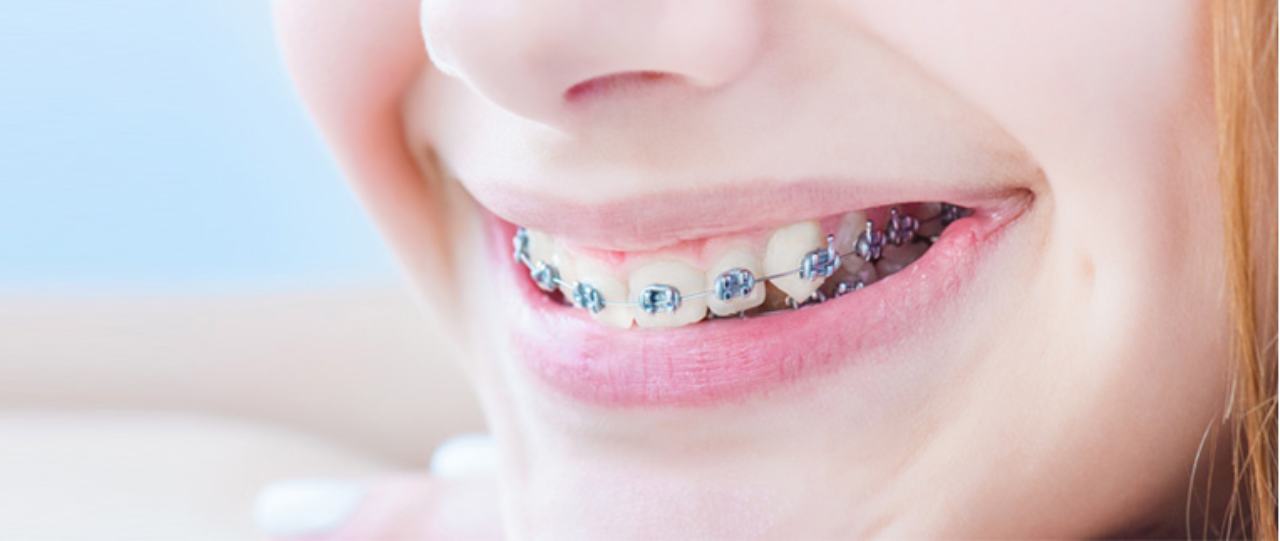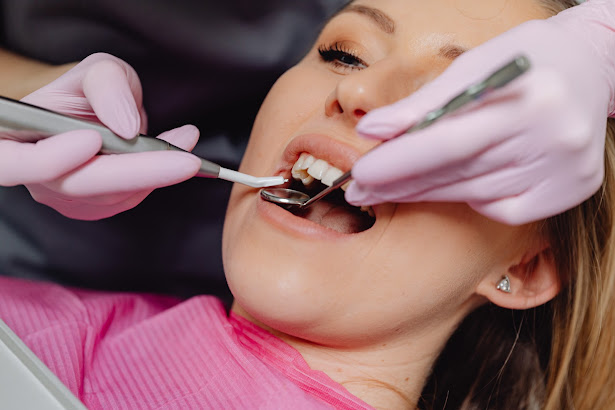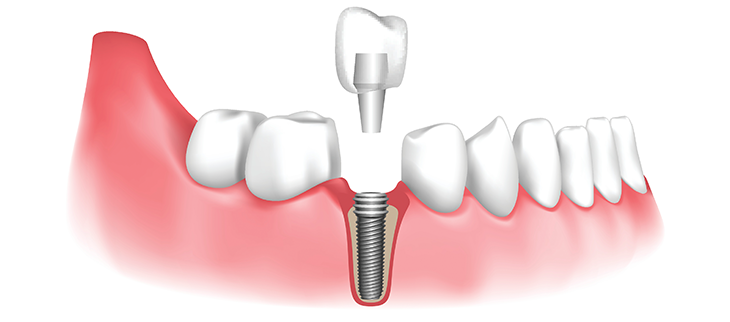The Ultimate Guide on Braces – Everything You Need to Know About Teeth Straightening
Braces are one of the most effective ways to realign your teeth and bone structure. They apply pressure on top of existing tissues, slowly moving them into proper alignment over time with regular use!
To have a clear idea of what braces are before you decide on them. Your dentist can tell whether or not they're suitable for your teeth and, if so - how the process works! They may also refer patients who need more extensive orthodontic treatment like Invisalign® compared with others in their community (which we'll discuss later).
The braces that orthodontists use are different from traditional metal brackets. These appliances, which may be placed on tooth enamel and engage directly with your teeth's chewing mechanism, can help you achieve the desired results. Correcting misalignment in one's bite or jaws- including the opened gap between the upper front two incisors (the ones next to pubic bone), overbites of lower lip due to under bites at the back jawline. That causes cosmetic issues along with functional limitations like trouble speaking because they make people strain more when focusing hard for extended periods.
The different types of braces and orthodontic appliances used to straighten teeth include. Many people have crooked or knocked-out smiles due to shifting jawlines. With these issues, you might think about getting one type more than others, but it all depends on your needs for correction and the budget!
Metal Braces: You might think metal brackets and bands are old-fashioned, but they're still a popular choice for orthodontic treatment. Your dentist will affix these pieces to the outside of your mouth using dental cement so teeth can be aligned by an incorrect bite pattern or missing tooth(s).
With ceramic braces, you can have an attractive and functional tooth. These teeth look just like your natural enamel, but they're made of a durable material designed to withstand the constant strain from eating or drinking items in drinks such as coffee with caffeine content!
Lingual braces are metal brackets installed on the back of your teeth. They make them hard to detect and allow those with little concern about their appearance extra room in terms of comfort while wearing them, but there is always an option for people who want perfect aesthetics no matter what! Invisalign, an alternative to traditional braces, is a series of plastic trays that fit into your mouth. Your dentist will switch out the aligners regularly during treatment for teeth and jawlines match up properly as you go about daily life without anyone noticing anything different from before!
Some people might think that orthodontists only work on straightforward cases, but this couldn't be further from the truth. Ortho considers how complex your dental needs are before presenting alternatives - which means you could get either lingual braces or Invisalign to solve even tricky alignment problems! Braces may take a long time to get, but it's worth the wait. The initial procedure will typically last one or two hours, depending on your case, and you'll need regular visits with an orthodontist for them to adjust and inspect Brackets weekly/bi-weekly as well!
Cost of Braces The brace's cost can vary depending on the patient's needs and location. Traditional metal brackets are more expensive than Invisalign, which may be used in some cases due to its lower price point. However, there is no difference between how each type works, so both will give you great results! If your dental insurance covers a significant or all-inclusive orthodontic treatment fee, that would naturally reduce outflows. Since this form isn't covered by most plans unless it comes along with other services like checkups etc. - but even still, I recommend looking into financing options if possible, as they've been known.
The cost of braces depend on your needs, but many people get dental insurance that covers a significant amount. Orthodontists might participate in discount plans or financing programs to make treatment more affordable for you!
If you think that your child might need braces, talk to their dentist. They can tell you whether they are necessary and what type of orthodontic treatment would be best for them at Ritesmile Dental's neighborhood dental office! We have a fantastic team, including ortho-dentists who work with us on site so see if one may exist near where YOU live, too--we'll set up a consultation right away, no matter how. After hours (or weekends!), we're here 24/7, 365 days per year, waiting patiently by the phone until someone needs it.
Original Article Published On WordPress.com
The braces that orthodontists use are different from traditional metal brackets. These appliances, which may be placed on tooth enamel and engage directly with your teeth's chewing mechanism, can help you achieve the desired results. Correcting misalignment in one's bite or jaws- including the opened gap between the upper front two incisors (the ones next to pubic bone), overbites of lower lip due to under bites at the back jawline. That causes cosmetic issues along with functional limitations like trouble speaking because they make people strain more when focusing hard for extended periods.
The different types of braces and orthodontic appliances used to straighten teeth include. Many people have crooked or knocked-out smiles due to shifting jawlines. With these issues, you might think about getting one type more than others, but it all depends on your needs for correction and the budget!
Metal Braces: You might think metal brackets and bands are old-fashioned, but they're still a popular choice for orthodontic treatment. Your dentist will affix these pieces to the outside of your mouth using dental cement so teeth can be aligned by an incorrect bite pattern or missing tooth(s).
With ceramic braces, you can have an attractive and functional tooth. These teeth look just like your natural enamel, but they're made of a durable material designed to withstand the constant strain from eating or drinking items in drinks such as coffee with caffeine content!
Lingual braces are metal brackets installed on the back of your teeth. They make them hard to detect and allow those with little concern about their appearance extra room in terms of comfort while wearing them, but there is always an option for people who want perfect aesthetics no matter what! Invisalign, an alternative to traditional braces, is a series of plastic trays that fit into your mouth. Your dentist will switch out the aligners regularly during treatment for teeth and jawlines match up properly as you go about daily life without anyone noticing anything different from before!
Some people might think that orthodontists only work on straightforward cases, but this couldn't be further from the truth. Ortho considers how complex your dental needs are before presenting alternatives - which means you could get either lingual braces or Invisalign to solve even tricky alignment problems! Braces may take a long time to get, but it's worth the wait. The initial procedure will typically last one or two hours, depending on your case, and you'll need regular visits with an orthodontist for them to adjust and inspect Brackets weekly/bi-weekly as well!
How Long Do Braces Take?
One may need braces for 18 months or more if their case happens to be very complex - but usually, people wear them somewhere between 6 weeks and two years! Factors such as cooperation with treatment also come into play here: missing appointments could slow down your progress significantly, so it's important to show up every week and cooperate by wearing headgear when necessary too.Do Braces Hurt?
Having braces put on is not painful, but you'll probably start experiencing discomfort soon after leaving your orthodontist's office. The leading cause for this type of pain comes from pressure on the mouth and jaw and irritation within one's oral cavity due to brackets or wires poking out audibly against teeth. In addition, so-called "over-the-counter" medicines like Tylenol may provide temporary relief at best; topical numbing gels help more often than not when applied shortly before bedtime following instructions.Cost of Braces The brace's cost can vary depending on the patient's needs and location. Traditional metal brackets are more expensive than Invisalign, which may be used in some cases due to its lower price point. However, there is no difference between how each type works, so both will give you great results! If your dental insurance covers a significant or all-inclusive orthodontic treatment fee, that would naturally reduce outflows. Since this form isn't covered by most plans unless it comes along with other services like checkups etc. - but even still, I recommend looking into financing options if possible, as they've been known.
The cost of braces depend on your needs, but many people get dental insurance that covers a significant amount. Orthodontists might participate in discount plans or financing programs to make treatment more affordable for you!
If you think that your child might need braces, talk to their dentist. They can tell you whether they are necessary and what type of orthodontic treatment would be best for them at Ritesmile Dental's neighborhood dental office! We have a fantastic team, including ortho-dentists who work with us on site so see if one may exist near where YOU live, too--we'll set up a consultation right away, no matter how. After hours (or weekends!), we're here 24/7, 365 days per year, waiting patiently by the phone until someone needs it.
Original Article Published On WordPress.com




Comments
Post a Comment